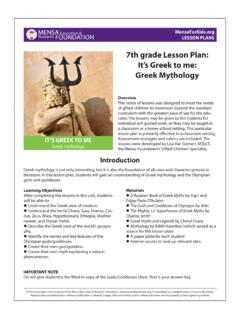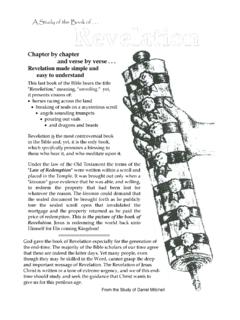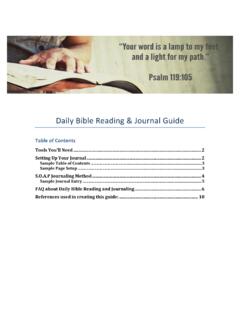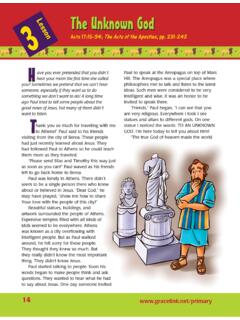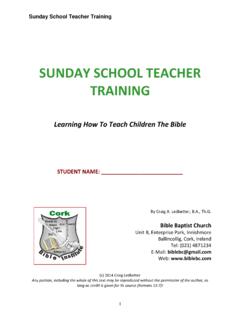Transcription of Folk Tales and Fables - WeeklyStorybook
1 folk Tales and Fables Retold by Mike Peterson Illustrated by Marina Tay Curriculum Guide by Mike Peterson and Jennifer Hind with additional material by Lisa Sax text copyright 2005, Mike Peterson illustrations copyright 2005, Marina Tay Introduction The stories in this series were collected from authentic folklore sources in the public domain. In making the selections, I tried to find well-researched stories that required minimal changes to conform to the tastes and sensibilities of a modern audience, and that brought with them a sense of old-fashioned story-telling.
2 While some required more editing than others, I did not change any plot points or important elements of any of these stories. It is a diverse collection, not just in terms of the nations and cultures represented but also in the tone and mood of the stories. Some, like The White Dog, (Latvia) have elements of a traditional European fairy tale. Our two Japanese stories are more philosophical, each in its own way. Two of our African stories are mostly fun -- the forerunners of the Brer Rabbit stories -- but How The Hawk Chose His Food is a fable that Aesop might have envied.
3 And the Tales that actually include fairies are much more bittersweet than most modern readers would expect. Back in my reporting days, Arlo Guthrie remarked to me in an interview that, after all, folk songs are just songs that folks sing. He was unconcerned about whether a song was 200 years old or written by the Beatles, and defined folk music by its acceptance rather than its origins. By the same token, these stories are united not by theme or country of origin or age, but because they have been accepted by the people who tell them.
4 It is this appeal that keeps stories alive, and, for modern readers, is the difference between an old story read for scholarly purposes and one which happens to be old but contains an appealing, engaging sense of universal wisdom , warmth and truth. I've gone through many, many stories looking for folk Tales and Fables that your students will enjoy and that will spark lively classroom discussions, and I hope you like the selection. This guide contains lesson ideas and exercises you may apply to any of the stories, as well as specific material for use with each story.
5 In the end, however, your use of these Fables and folk Tales in the classroom, like your use of the overall newspaper in the classroom, will be limited only by your imagination. If you come up with a lesson plan of your own that works particularly well, I hope you'll share it with me. We're all here to learn! Mike Peterson Project editor folk Tales AND Fables . Introduction to the genre: How to introduce folk Tales to your students folk Tale Elements Information and lesson plans about elements characteristic of folk Tales . Specific activities and instructional strategies to teach about each of the elements.
6 *Character Development *Setting *Plot and Themes Critical Analysis Teaching students to analyze and interpret folk Tales through a critical lens. Develop an understanding of social development, cultural implications and trends in literature. Skill-based Instruction Using the folk Tales to teach a variety of skills such as decoding, fluency, oral presentation and grammar. Creative Writing Project Use the folk Tales to teach styles of writing such as persuasive, descriptive and narrative in a fun and educational format -- a newspaper!
7 Cultural studies Learn more about the various countries and cultures from which the stories come. The Individual Stories: Writing, Reading, Listening & Speaking Lessons, activities and strategies based on individual folk Tales This guide is designed for use by 3-8 grade level classroom teachers who are introducing a unit of study on folk Tales . The content and suggested activities are meant to be adapted and modified to suit the needs of the intended audience, including younger students who may need more help in reading and understanding the stories.
8 All activities and instructional strategies included in this manual are based on effective teaching models, state- and national- standards and research-based literacy instruction. The reproducibles are designed for use with individual stories and can be introduced at any stage of this literacy unit depending on the established goals and objectives. The suggested overview for this unit is intended to help teachers develop a flexible curriculum plan that can be tailored to the amount of time allotted for the unit. Rather than defining the unit of study by use of a timeframe, the unit is structured by a variety of components.
9 folk Tales AND Fables . Introduction to the genre: folk Tales The following activities are suggestions of how to introduce folk Tales to students: Write the words folk Tale on an overhead and create a K-W-L Chart to discuss the topic. (A K-W-L chart is a three-column vertical chart with the headings: K for what you know, W for what you want to learn, and L for what you have learned. The L is completed after the unit of study to deter- mine the learning outcomes.). Dress up as a character from a popular or common folk tale such as Little Red Riding Hood and ask students to guess who you are.
10 Prompt them to brainstorm and list other folk Tales , like Paul Bunyan, Jack the Giant Killer or some local monster said to live in a local lake or forest, Create a classroom chart of familiar Tales to reference during class discussion. Visit the library and create a display of folk tale books. Ask students to name the genre that is common for all of the books. Create a folk tale survey and discover what students already know about folk Tales . Using survey information from whole class create a graph to display the responses. Explain to students that you will be introducing a unit on folk Tales and assign them the task of using the Internet to gather information (at least one fact or example) about folk Tales .
